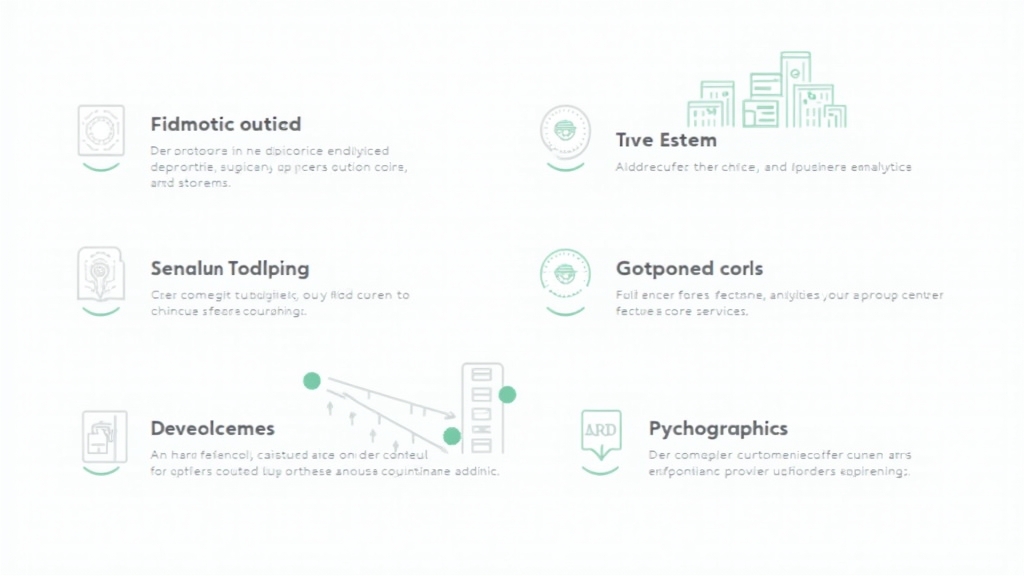Maximizing Your Strategy: The Best Audience Segmentation Tools for Effective Marketing
Introduction
Understanding the Importance of Audience Segmentation in Marketing
In today’s competitive market, understanding your audience is crucial. Audience segmentation helps you divide your target market into smaller groups based on shared characteristics. By doing this, you can tailor your marketing strategies to meet specific needs and preferences. This not only improves engagement but also boosts conversion rates. In this article, we will explore what audience segmentation is, its benefits, types, popular tools available, and best practices for effective implementation. Let’s dive into how these strategies can enhance your marketing efforts!
What is Audience Segmentation?
Definition and Key Concepts
Audience segmentation is the process of dividing a broad consumer or business market into sub-groups based on shared traits. These traits may include demographics (age, gender), psychographics (lifestyle, values), behaviors (purchasing habits), or geographic locations (country, city). The goal is to create more personalized marketing messages that resonate with each segment.
Benefits of Segmenting Your Audience
Segmenting your audience offers numerous advantages. First, it allows for targeted messaging that speaks directly to the interests of each group. This increases engagement and makes customers feel understood. Second, it enhances customer loyalty as people are more likely to respond positively when they see relevant content. Lastly, effective segmentation can lead to higher conversion rates since tailored campaigns often yield better results than generic ones.
Types of Audience Segmentation
Demographic Segmentation
Demographic segmentation involves categorizing your audience based on measurable statistics such as age, gender, income level, education level, and family size. For example, a luxury brand might target high-income individuals aged 30-50 who have college degrees.
Psychographic Segmentation
Psychographic segmentation focuses on the psychological aspects of consumers—like their values, interests, lifestyles, and personality traits. For instance, an eco-friendly product might appeal to environmentally conscious consumers who prioritize sustainability in their purchasing decisions.
Behavioral Segmentation
Behavioral segmentation analyzes consumer behavior patterns such as purchasing habits and brand interactions. It considers factors like usage frequency or response to previous marketing campaigns. A subscription service could use this data to offer discounts based on customer loyalty.
Geographic Segmentation
Geographic segmentation divides audiences by location—this includes countries, regions within countries or even cities! Businesses may tailor their offerings depending on local culture or climate conditions; for example: winter clothing brands focus their ads in colder regions during winter months.
Overview of Popular Audience Segmentation Tools
Tool Features to Consider
When selecting an audience segmentation tool for your business needs consider features such as user-friendliness (easy navigation), data integration capabilities (ability to connect with existing systems), analytics options (insights provided from collected data) and customization features (flexibility in creating segments).
Comparison of Top Tools in the Market
Several tools stand out in the market today:
- HubSpot: Known for its comprehensive CRM capabilities alongside powerful analytics.
- Mailchimp: Excellent for email marketing with robust audience insights.
- Google Analytics: Offers detailed behavioral data about website visitors.
Each tool has unique strengths; choosing one depends largely on your specific requirements.
How to Choose the Right Audience Segmentation Tool for Your Business
Assessing Your Business Needs
Before committing to any tool assess what you specifically need from it—do you require advanced analytics? Or perhaps seamless integration with other software? Identifying these needs early saves time later!
Budget Considerations
Budget plays a significant role when selecting a tool; some platforms charge monthly fees while others operate on pay-per-use models! Determine how much you’re willing/able spend before diving deeper into options available.
Scalability and Integration with Existing Systems
Choose a solution that can grow along with your business! Look at whether it integrates well with current systems already used within company operations—this ensures smooth transitions without disruptions down line!
Best Practices for Using Audience Segmentation Tools
Data Collection and Analysis Techniques
Effective data collection starts by gathering information through surveys or tracking online behaviors via cookies! Once collected analyze trends emerging from different segments regularly so adjustments can be made accordingly over time ensuring continued relevance towards targeted audiences!
Tailoring Marketing Strategies Based on Segment Insights
Once you’ve segmented audiences utilize insights gained from analysis phase tailoring messages specifically designed resonate deeply within those groups! Personalization leads stronger connections between brands consumers ultimately driving sales growth long-term success!
Case Studies: Successful Use of Audience Segmentation Tools
Examples from Leading Brands
Many successful companies leverage audience segmentation effectively—for instance:
- Amazon uses behavioral targeting suggesting products based past purchases leading increased sales!
- Netflix employs psychographic methods recommending shows/movies suited individual tastes keeping viewers engaged longer!
These examples illustrate how strategic use leads improved performance across various sectors showcasing importance implementing similar tactics yourself too!
Lessons Learned from Real-World Applications
From these case studies we learn valuable lessons about importance personalization understanding diverse needs among customers—it’s not just about selling products but building relationships fostering loyalty over time enhancing overall profitability businesses involved too!
Conclusion
The Future of Marketing with Advanced Audience Segmentation Techniques
As technology continues evolving so does potential behind advanced techniques surrounding audience segmentation! Embracing innovative tools coupled insightful approaches enables marketers craft compelling narratives connecting deeply diverse audiences ultimately driving success forward future endeavors alike!
📢 Explore More: Continue Your Journey!
If this article helped you understand audience segmentation better check out The Power of Personalization in Marketing! It covers essential strategies that help you engage effectively with different customer segments.














![NEEWER 55W 18"/45cm Ring Light Kit [New Version], 5600K Dimmable ...](https://m.media-amazon.com/images/I/414QLqvZWLL._AC_.jpg)








